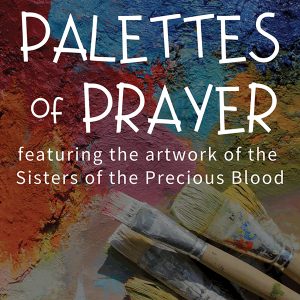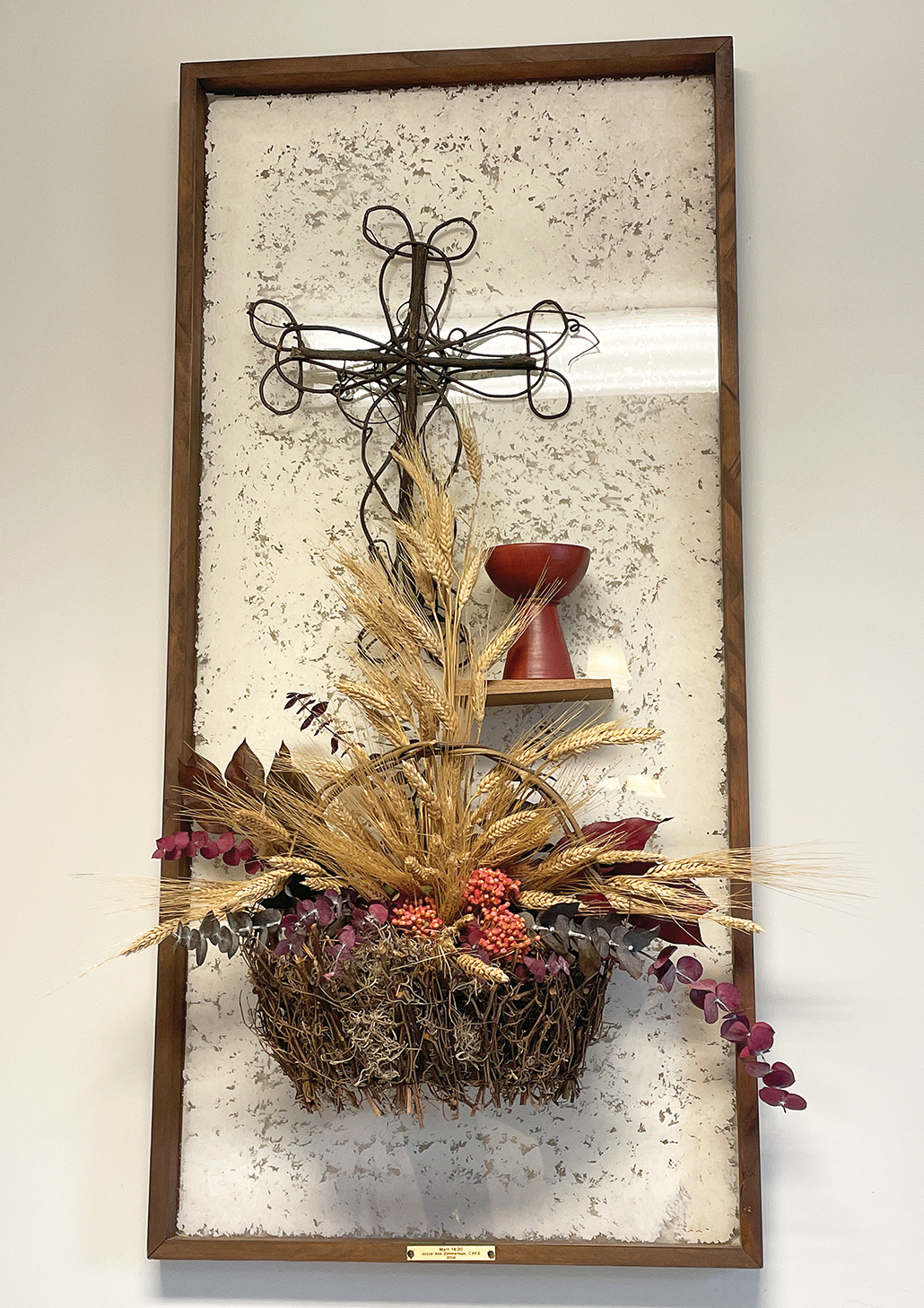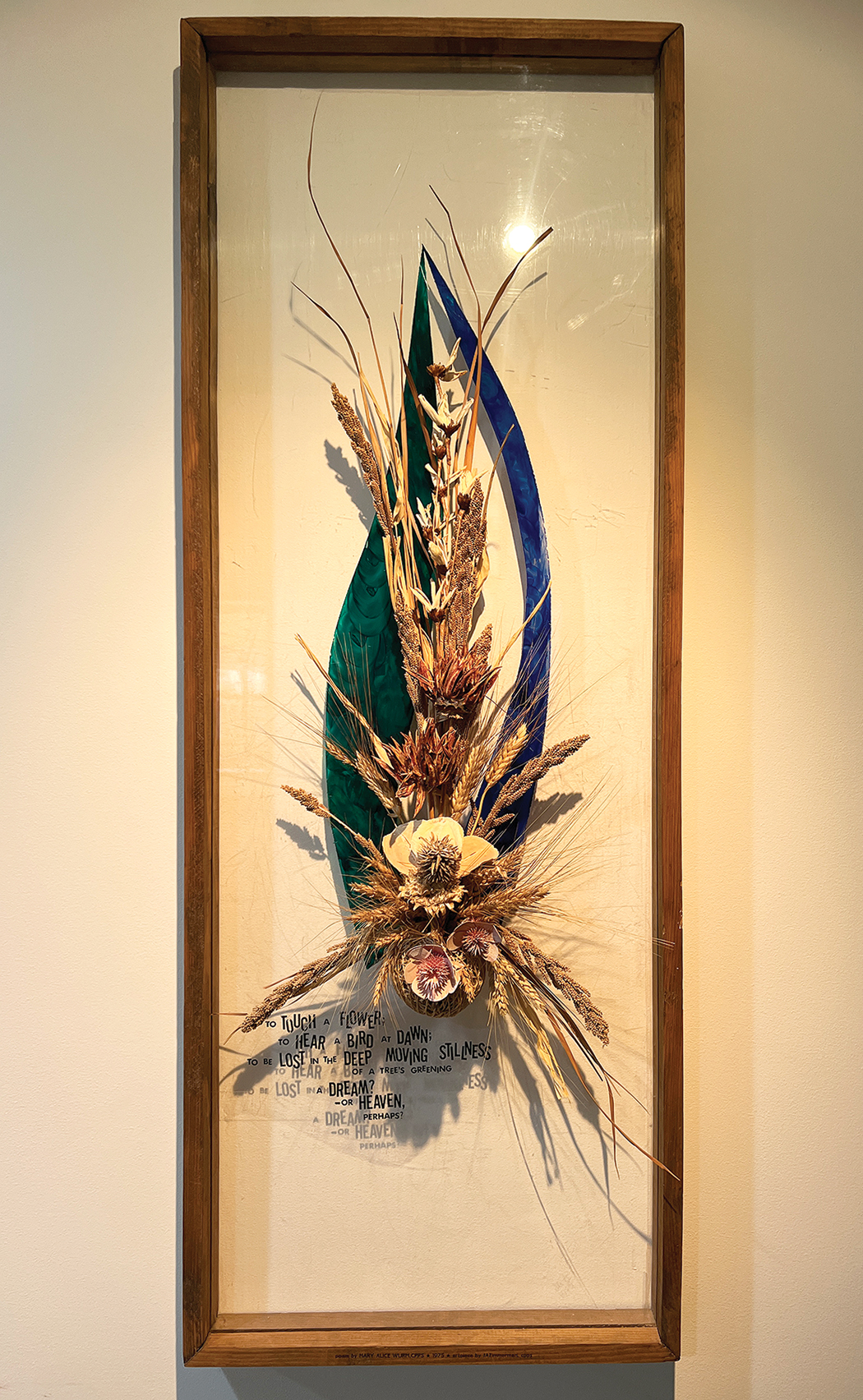
Many Sisters of the Precious Blood make art and crafts, and while the forms of their creations vary widely — carving, painting, quilting, singing and many more — they share in common a means of communion with others, and a way to reflect the beauty of God.
The eucharistic ritual flows from the Introductory Rites (during which we recognize ourselves as an assembly before our God) into the Liturgy of the Word (during which we are confronted with God’s prophetic words that urge us to live the gospel more fully) into the Liturgy of the Eucharist (during which we are transformed into being ever more perfect members of the body of Christ) into the Concluding Rite (during which we are sent forth to live as Christ). Our own personal needs and desires during this dynamic ritual flow are subsumed under this communal action of transforming us ever more perfectly into our common identity as the body of Christ. It is in the rhythm of this weekly action that we receive the impetus to be ministers of reconciliation, because it is in this weekly action that we celebrate the union of the sacrifice of our own lives with Christ and in that union share in his identity. Eucharist as nourishment for our journey to the cross and as gift of identity as members of the body of Christ is the double prong of Eucharist’s reconciling action. It is both challenge and gift.
… Paying attention to the divisions and injuries among us and trying to heal them calls us to a renewed commitment to celebrate Eucharist faithfully and fruitfully, for that is the sacrament where we approach the messianic table as Christ’s body to be nourished and strengthened. Without its strength we cannot heal the divisions among us. Without its nourishment we cannot have the strength to forgive the injuries we inflict on each other. Without Eucharist we are a divided body of Christ. With Eucharist we are a dynamic organism continuing the salvific work of its Head.
Healing divisions among us restores us to our common identity as body of Christ. Thus, Eucharist is the manifestation of the healing process as together we eat and drink from the common table. This common action challenges us to acknowledge and live out of our common identity. It challenges us to realize that when we harm another or exclude another we harm and exclude ourselves. It challenges us to remember that whatever we do to the least members of the body, we do to Christ himself (cf. Matt 25:40). It challenges us to examine ourselves on how well we surrender to the eucharistic action and live it out in our daily lives. It challenges us to take up our cross with Christ by surrendering our wills for reconciling with others. Reconciliation brings us to Eucharist with a renewed commitment to be one with each other and share in the fruits of the risen Christ’s peace.
— Story by Sister Joyce Ann Zimmerman. Excerpt from “Eucharist and Reconciliation: A Jubilee Year Gift,” Liturgical Ministry 9 (Winter 2000): 19-27. Reprinted with permission.

 Top, “Matt 14:20” is on display in the Last Supper Room at the Maria Stein Shrine of the Holy Relics. Bottom, this artwork is on display at Salem Heights and includes a poem by Sister Mary Alice Wurm. Contributed photos.
Top, “Matt 14:20” is on display in the Last Supper Room at the Maria Stein Shrine of the Holy Relics. Bottom, this artwork is on display at Salem Heights and includes a poem by Sister Mary Alice Wurm. Contributed photos.




